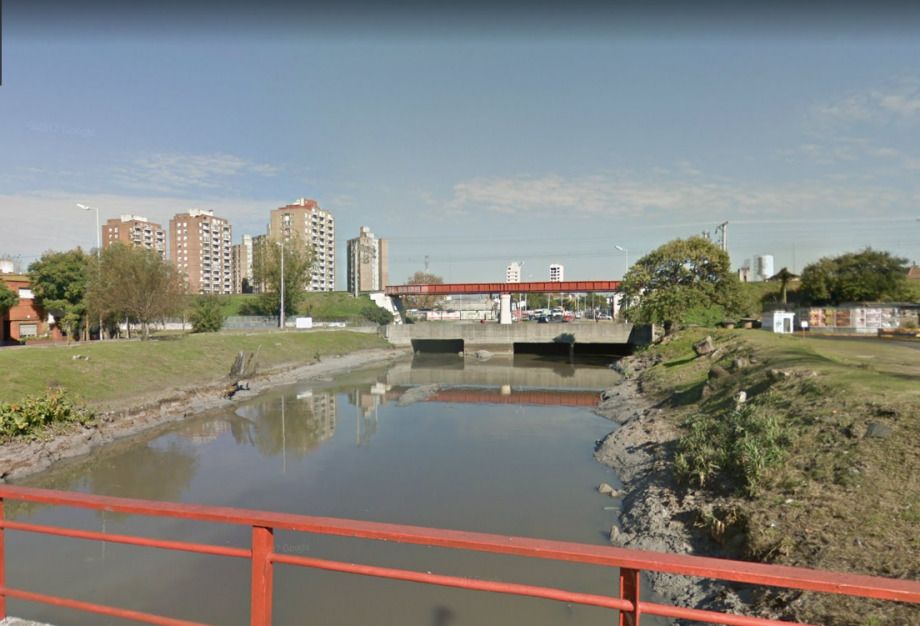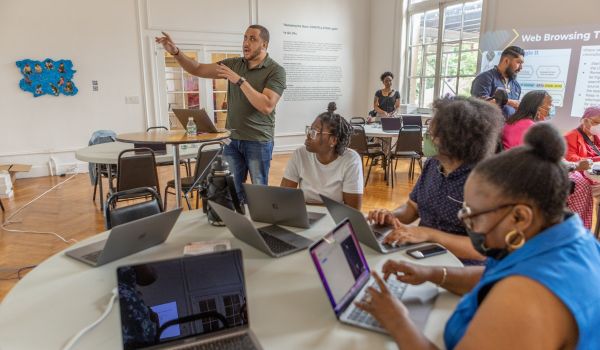This week, planners, policymakers and urban practitioners from across the world are gathering in Kuala Lumpur for World Urban Forum 9. This story is part of Next City’s coverage of the Forum. For more stories, visit our World Urban Forum 9 page here.
Residents of Avellaneda, a working-class suburb of Buenos Aires with a busy port, have been complaining for years about pollution and trash clogging up the Arroyo Sarandí, a stream that snakes through the town and has fallen victim to heavy industrial use along its banks. But people live along the banks, too, part of the informal populations that dot the Argentine capital’s metropolitan area in so-called villas misérias.
In post after post on YouTube, local blogs and community media document the precarious nature of life in wooden shanties alongside the toxic creek, which is prone to flooding and where noxious gases can cause vomiting.
But you wouldn’t know any of that if you took a Google Maps Street View tour of Avellaneda. A team of researchers at The New School in New York and the University of Buenos Aires used Avellaneda, home to over 300,000 people, as a case study in what they call the emerging “urban digital divide” between places visible on the platform and those that are not.
Try touring any of the streets where residents complain about the deplorable environmental conditions next to their homes, and the yellow humanoid icon that serves as the Google Maps Street View avatar won’t enter. At some of the few formal street crossings of Arroyo Sarandí, much of which has been paved over, Google Maps Street View shows at worst a dry streambed and, at best, a muddy, but clean-looking river.
“You will never know what is really happening in the bad parts of the city,” New School professor Margarita Gutman told Next City during this week’s World Urban Forum 9, an event where optimistic visions of data-driven cities are on full display.
At a time when Google Maps Street View can even display remote trails in Yosemite National Park, Gutman and her team of researchers worry that the Silicon Valley cartography tool is leaving behind people who live in the urban shadows.
“Google Maps Street View is crucial because it is a proxy to the formal city,” she said, and one with increasing relevance in academic circles that can inform policymaking. Recent groundbreaking research used machine learning and Street View to accurately predict U.S. socio-economic demographics based on the make and model of cars parked in front of people’s houses. MIT is using Street View to map out urban expansion. Google itself has cross-checked air quality and pollution monitors against its Bay Area footage.
But with an estimated one billion people living in urban informality throughout the world, fully one-seventh of humanity is at risk of being left behind in the high-tech era of AI and machine learning.
In cities where Google has already sent its famous camera-equipped cars, even highly visible places remain largely out of view. In Rocinha, Rio’s largest favela and a community with many of the trappings of the formal city, Street View shows just two main roads, but not the thousands of alleys where the bulk of the community’s several-hundred-thousand residents live. And it’s not as though the technology doesn’t exist. The tech giant’s “Trekker” backpack offers a camera equipped for two-legged rather than four-wheeled exploration.
Meanwhile, in cities where Google Maps Street View has yet to train its lens, like Nairobi and Mumbai, the precedent set in cities like Rio and Buenos Aires doesn’t bode well for counting in places like Kibera and Dharavi.
All this concerns Gutman because of increasingly prevailing attitudes among urban professionals that metrics and measurement define municipal priorities — call it the Michael Bloomberg effect for his famous dictum: “In God we trust. Everyone else, bring data.”
Describing this attitude, Gutman cautioned, “What is not visible doesn’t exist, and if it doesn’t exist, we don’t have to take care of it.”

Gregory Scruggs is a Seattle-based independent journalist who writes about solutions for cities. He has covered major international forums on urbanization, climate change, and sustainable development where he has interviewed dozens of mayors and high-ranking officials in order to tell powerful stories about humanity’s urban future. He has reported at street level from more than two dozen countries on solutions to hot-button issues facing cities, from housing to transportation to civic engagement to social equity. In 2017, he won a United Nations Correspondents Association award for his coverage of global urbanization and the UN’s Habitat III summit on the future of cities. He is a member of the American Institute of Certified Planners.













